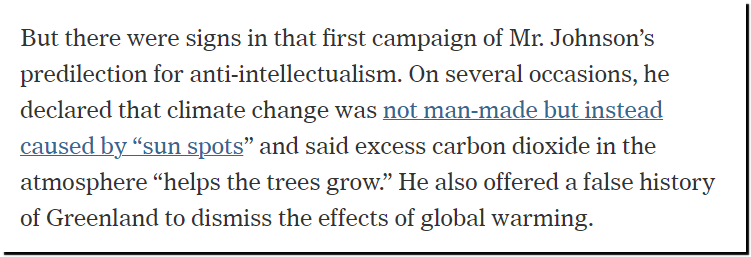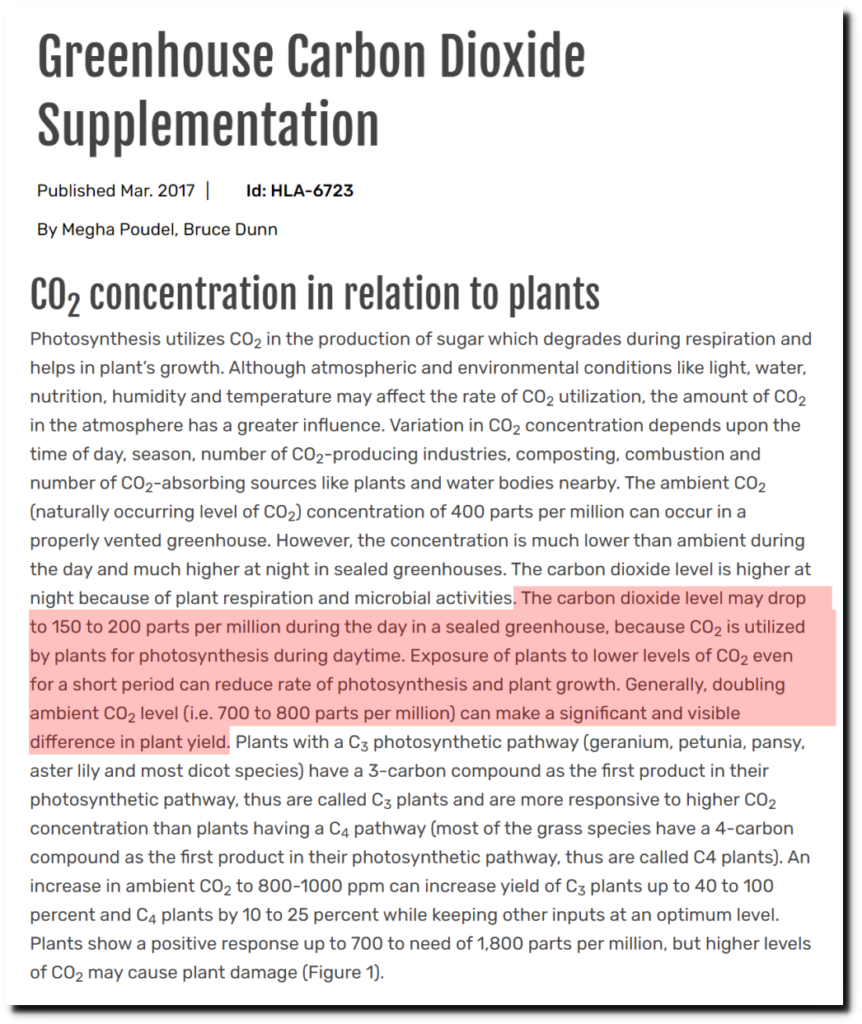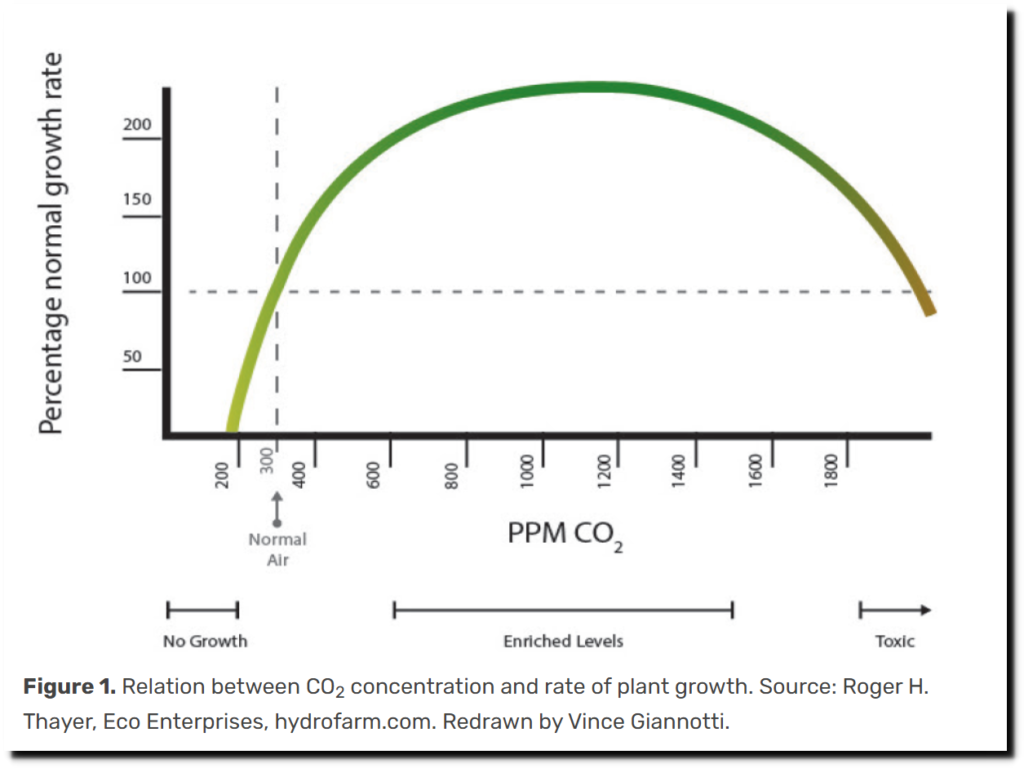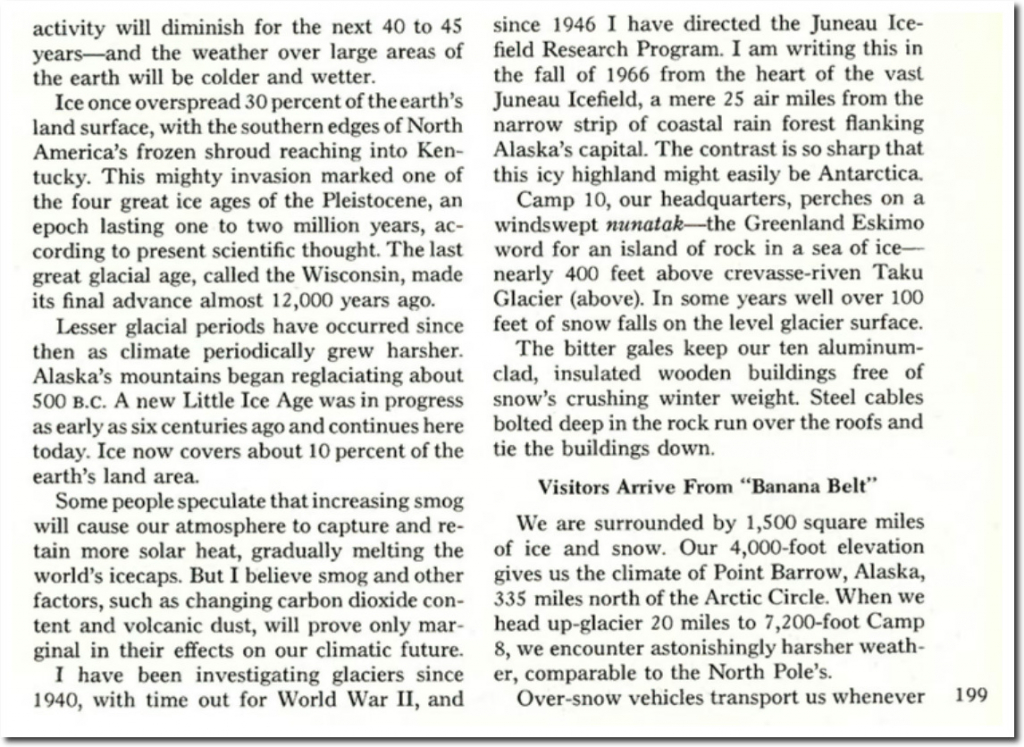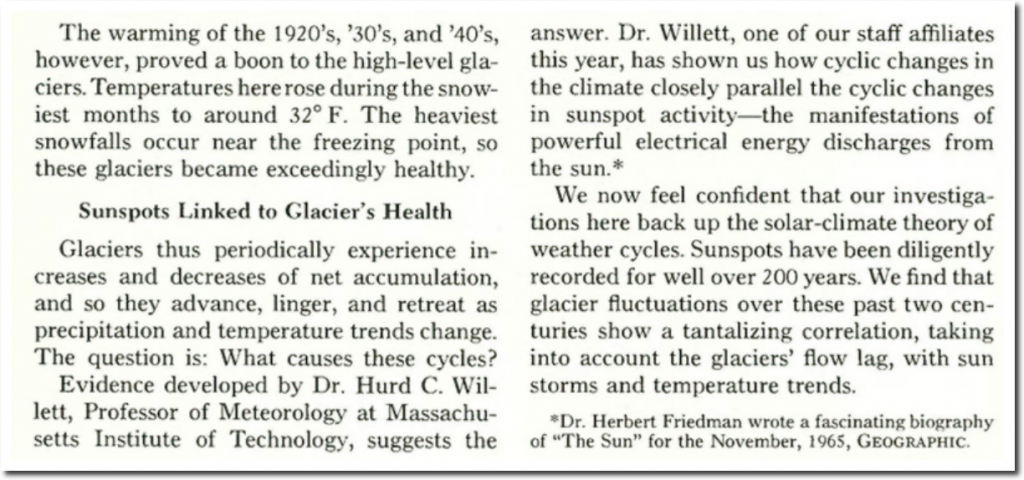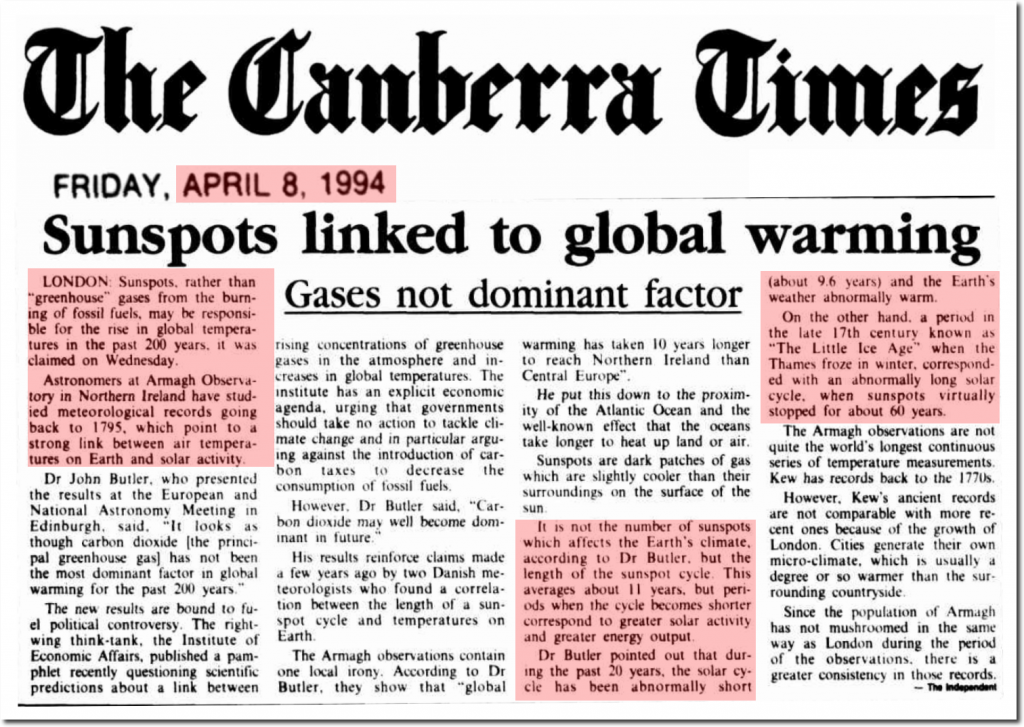The New York Times says it is anti-intellectual to believe that CO2 helps plants grow, or that the climate is controlled by the sun.
How Senator Ron Johnson Helps Erode Confidence in Government – The New York Times
Apparently they believe it is anti-intellectual to do any actual research.
Exposure of plants to lower levels of CO2 even for a short period can reduce rate of photosynthesis and plant growth. Generally, doubling ambient CO2 level (i.e. 700 to 800 parts per million) can make a significant and visible difference in plant yield.
Greenhouse Carbon Dioxide Supplementation | Oklahoma State University
“Sunspot cycles, which occur at intervals of 22 years and over longer periods of several hundreds of years, correlate strongly with periods of hot and cold, wet and moist weather on Earth.”
– @nytimes February 22, 1977
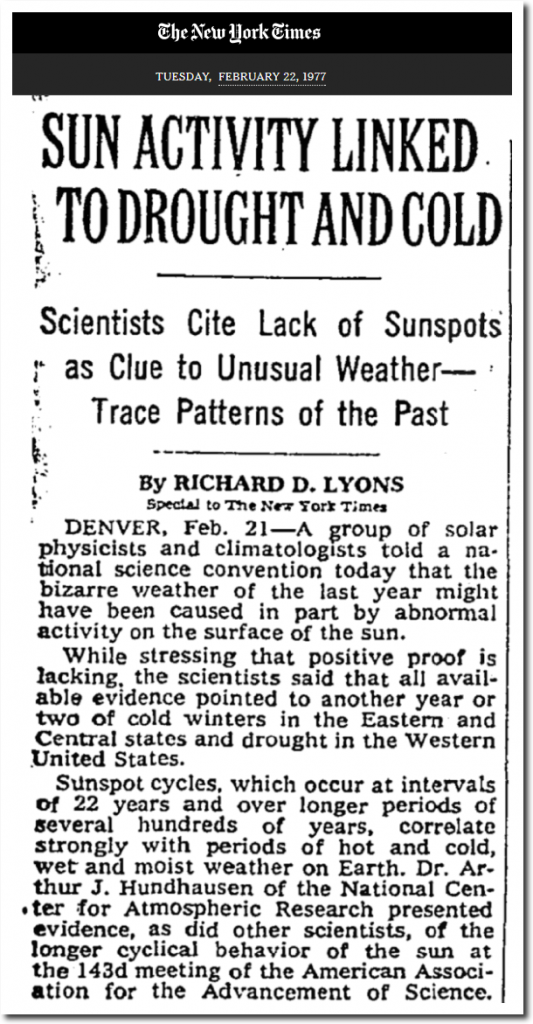 TimesMachine: February 22, 1977 – NYTimes.com
TimesMachine: February 22, 1977 – NYTimes.com
Dr. Hurd C. Willett, Professor of Meteorology at Massachusetts Institute of Technology, suggests the answer. Dr. Willett, one of our staff affiliates this year, has shown us how cyclic changes in the climate closely parallel the cyclic changes in sunspot activity—the manifestations of powerful electrical energy discharges from the sun.* We now feel confident that our investigations here back up the solar-climate theory of weather cycles. Sunspots have been diligently recorded for well over 200 years. We find that glacier fluctuations over these past two centuries show a tantalizing correlation, taking into account the glaciers’ flow lag, with sun storms and temperature trends.
The National Geographic Archive | February 1967 | page 1
LONDON: Sunspots, rather than “greenhouse” gases from the burning of fossil fuels, may be responsible for the rise in global temperatures in the past 200 years, it was claimed on Wednesday.
Astronomers at Armagh Observatory in Northern Ireland have studied meteorological records going back to 1795, which point to a strong link between air temperatures on Earth and solar activity.
It is not the number of sunspots which affects the Earth’s climate, according to Dr Butler, but the length of the sunspot cycle. This averages about 11 years, but periods when the cycle becomes shorter correspond to greater solar activity and greater energy output.
Dr Butler pointed out that during the past 20 years, the solar cycle has been abnormally short (about 9.6 years) and the Earth’s weather abnormally warm. On the other hand, a period in the late 17th century known as “The Little Ice Age” when the Thames froze in winter, correspond ed with an abnormally long solar cycle, when sunspots virtually stopped for about 60 years.

